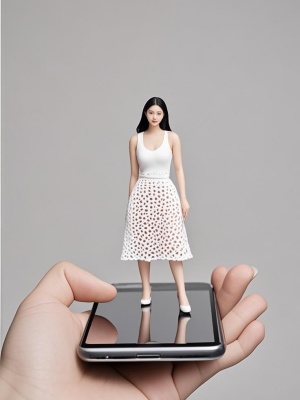The Art of Fine Art Photography Portraits: A Comprehensive Guide
Introduction
Fine art photography portraits transcend traditional photography by blending technical mastery with artistic vision. Unlike commercial portraits, fine art portraits aim to evoke emotions, tell stories, and challenge perceptions. Whether you're a photographer or an enthusiast, understanding the nuances of fine art photography portraits can elevate your appreciation and skills in this captivating genre.
What Defines Fine Art Photography Portraits?
Fine art photography portraits are characterized by their intentional composition, lighting, and emotional depth. These portraits often go beyond mere representation, offering a unique perspective on the subject. Key elements include:
- Conceptual Depth: Each portrait conveys a story or emotion, often open to interpretation.
- Technical Excellence: Mastery of lighting, focus, and post-processing techniques is essential.
- Artistic Vision: The photographer's personal style and creativity play a central role.
For inspiration, explore our gallery featuring stunning examples of fine art portraits.
Common Challenges and Solutions in Fine Art Portrait Photography
Problem: Capturing Authentic Emotion
One of the biggest challenges in fine art photography portraits is eliciting genuine emotion from subjects. Many photographers struggle with posed, unnatural expressions.

Solution: Creating a Comfortable Environment
- Build rapport with your subject before shooting
- Use conversation to evoke natural expressions
- Consider shooting in familiar environments
As noted by the Museum of Modern Art, the most compelling portraits often emerge from authentic interactions.
Technical Aspects of Fine Art Portraits
The technical execution of fine art photography portraits requires careful attention to several elements:
- Lighting: Dramatic Rembrandt lighting or soft diffused light can create different moods
- Composition: Rule of thirds, leading lines, and negative space are powerful tools
- Post-processing: Subtle enhancements can elevate an image without making it look artificial
For those interested in post-processing techniques, our AI photo restoration guide offers valuable insights.
The Role of AI in Modern Fine Art Portraiture
Emerging technologies are transforming fine art photography portraits. AI tools can assist with:

- Enhancing image quality while preserving artistic integrity
- Experimenting with different artistic styles
- Restoring and colorizing historical portraits
However, as the Tate Museum emphasizes, technology should enhance rather than replace the artist's vision.
Conclusion
Fine art photography portraits represent the intersection of technical skill and artistic expression. By understanding the conceptual foundations, mastering technical aspects, and judiciously incorporating new technologies, photographers can create compelling works that stand the test of time. Whether you're creating or collecting, fine art portraits offer endless possibilities for creative exploration.

For more inspiration and techniques, visit our blog where we regularly feature insights on portrait photography and digital art techniques.